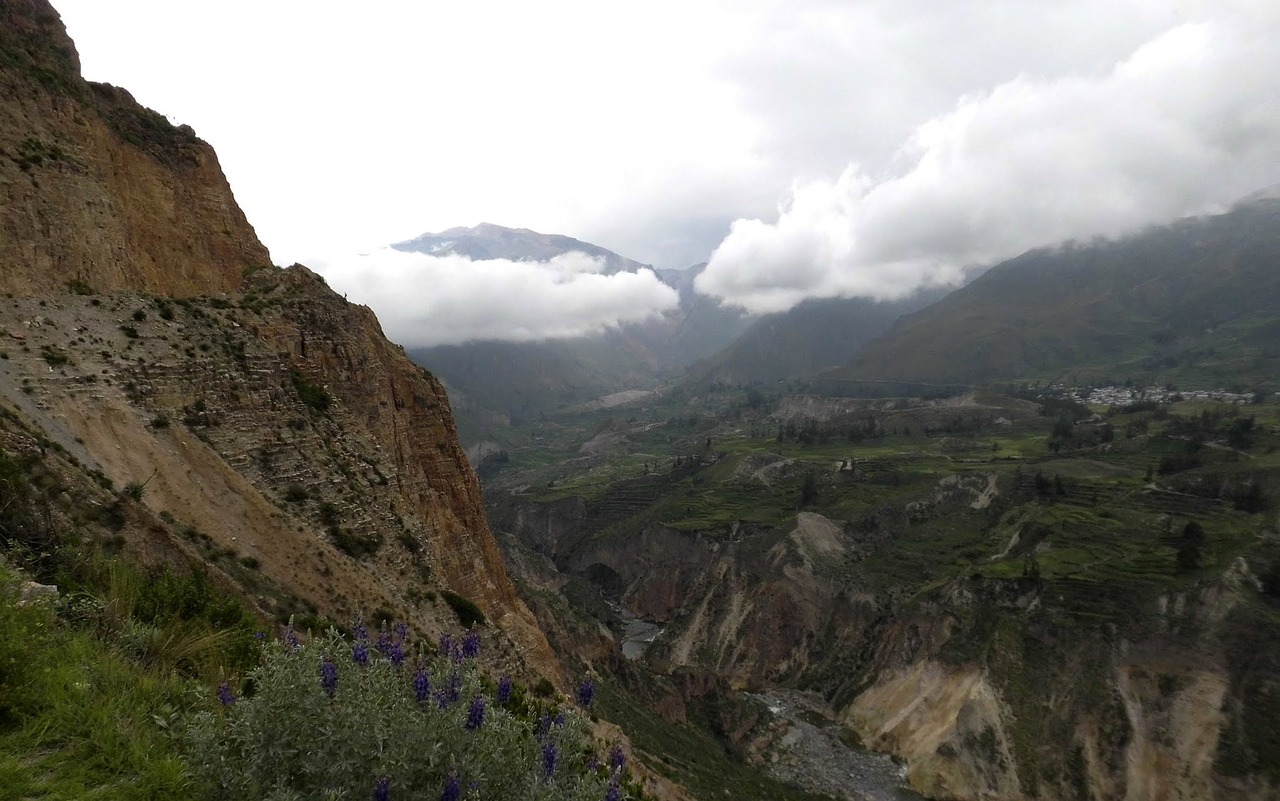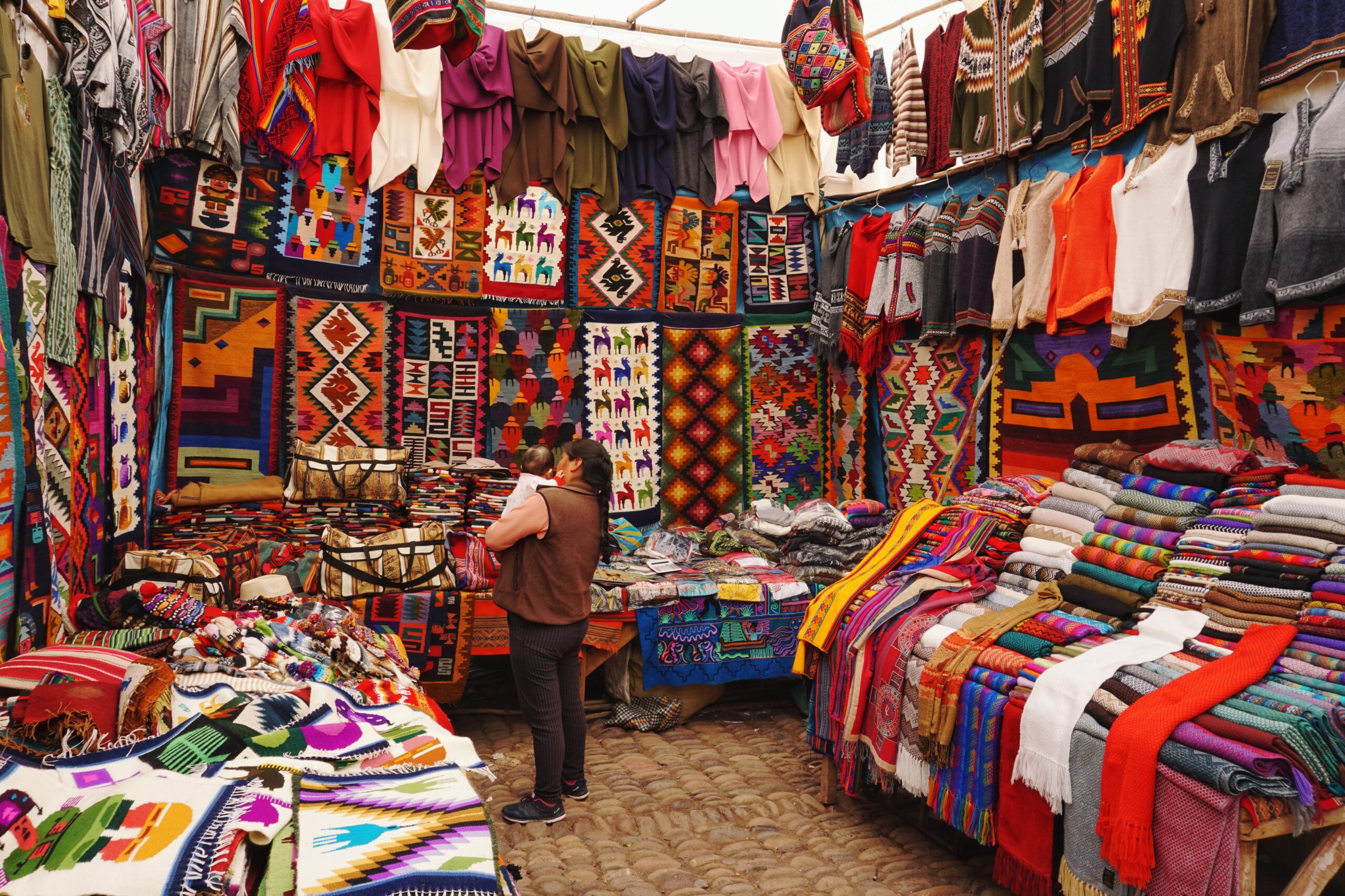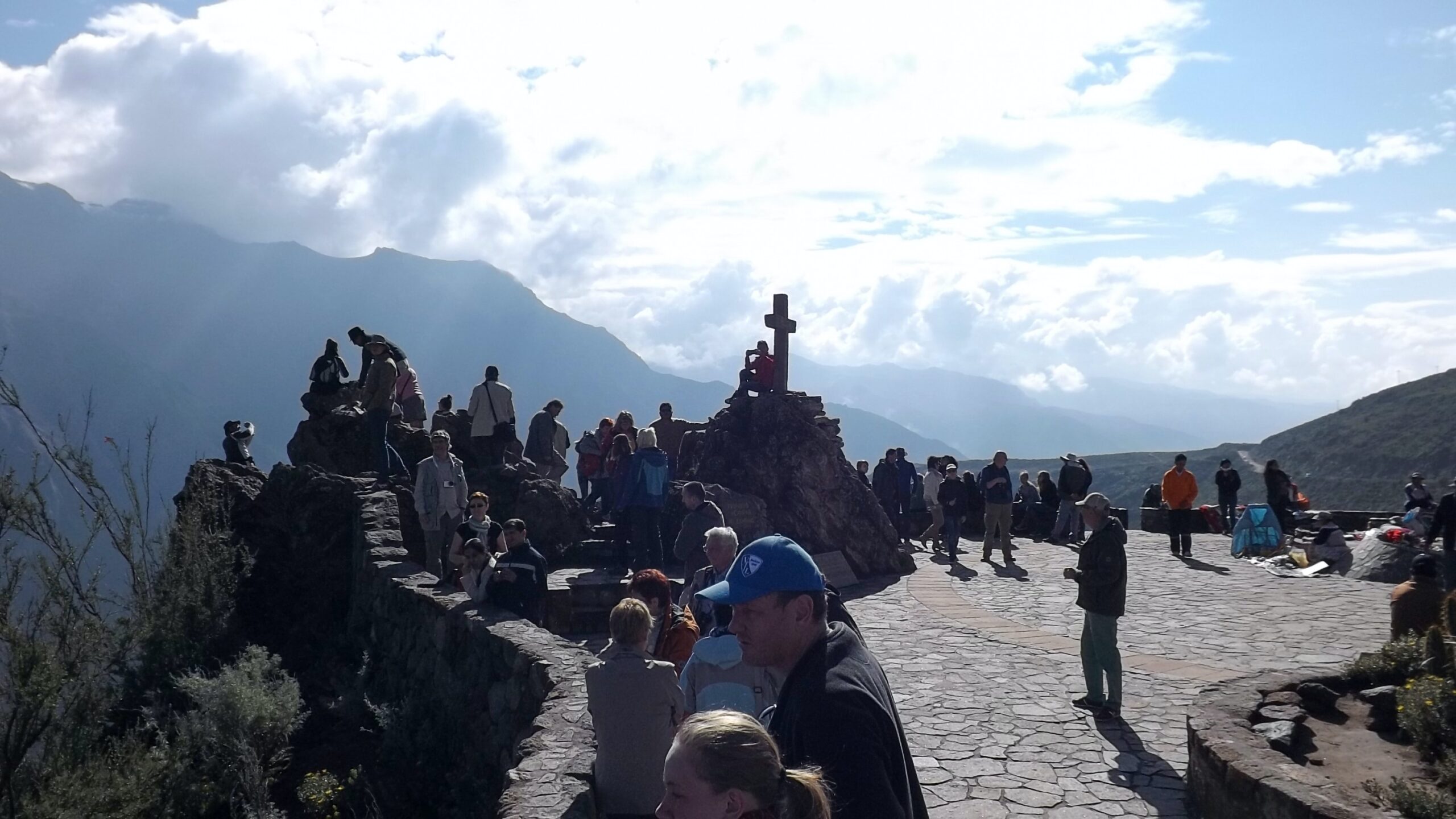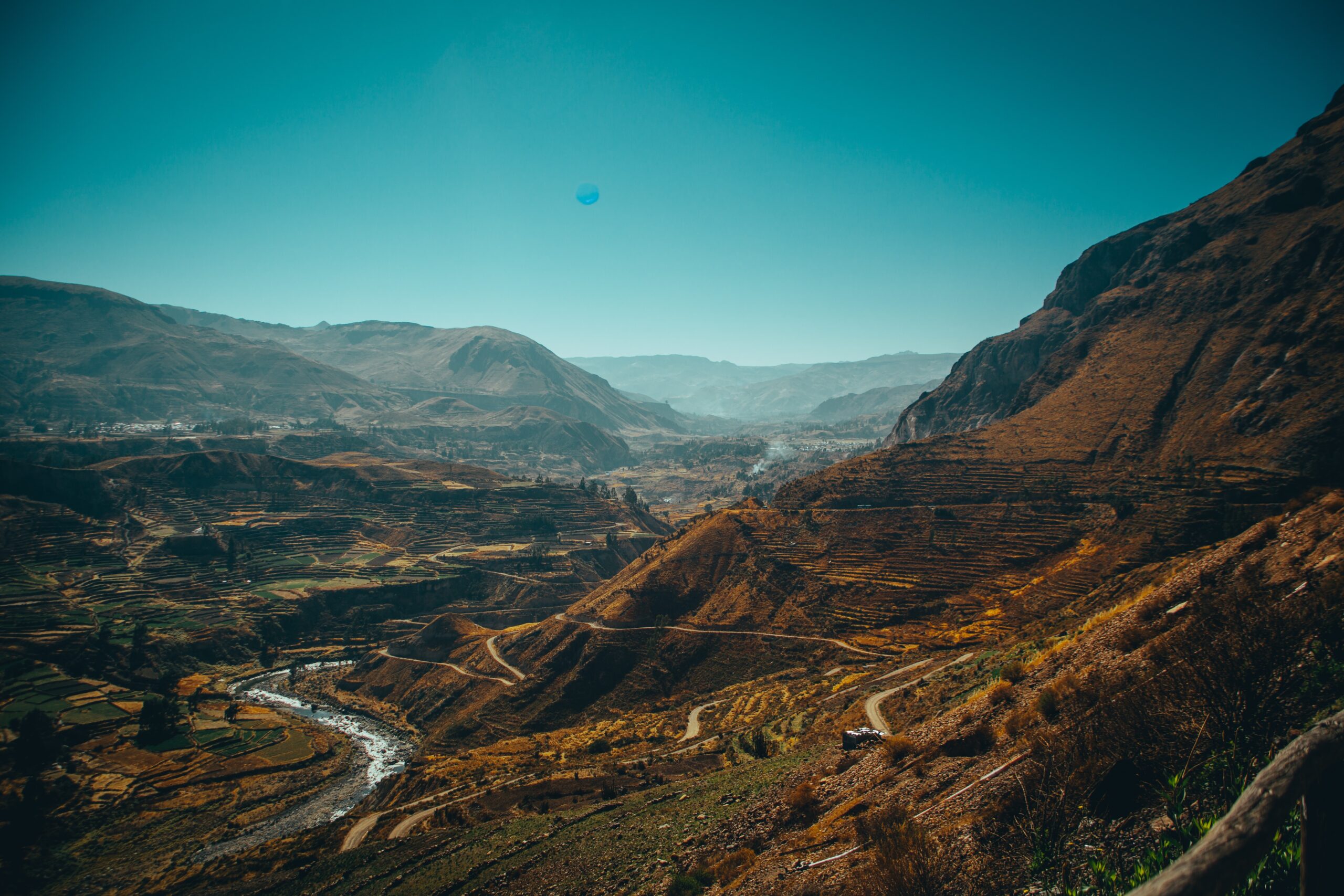Welcome to a captivating journey as we uncover Facts About Colca Canyon, one of the world’s deepest and most visually stunning canyons. Located in Southern Peru, Colca Canyon is a geological wonder with a depth of 3,270 meters. This makes it twice as deep as the Grand Canyon. The canyon’s spectacular landscapes, rich history, and diverse wildlife make it a fascinating exploration subject. By delving into these facts about Colca Canyon, we gain a deeper understanding of our planet’s incredible diversity. We also learn the importance of preserving unique natural habitats. Join us as we reveal the top ten amazing facts about this Peruvian treasure.
#1 Unraveling the Mystery: Depth and Size
The Depth and Size of Colca Canyon testify to nature’s awe-inspiring power. Towering over other famous canyons, it boasts a depth exceeding 3,270 meters, dwarfing the renowned Grand Canyon which is less than half its depth. This makes it one of the world’s deepest canyons, a title few can claim. Stretching 100 kilometers, its size is equally impressive. But it’s not just the scale that sets Colca Canyon apart. Its geographical features are a fascinating study of diversity. The canyon’s landscape is an intricate tapestry of gorges and cliffs, interspersed with remnants of ancient agricultural terraces that hint at a rich history. The canyon walls present a vivid palette of colors, ranging from stark white to various hues of pink and red. This is caused by the volcanic soil in the area. The ever-present Colca River, the architect behind the canyon’s formation, adds to the dramatic scenery, its path weaving through the canyon’s expanse and nurturing a diverse ecosystem in its wake.
#2 The Majestic Andean Condor: An Aerial Wonder
The Andean Condor, a native species to the Colca Canyon, is an iconic symbol of the Andes and a crucial part of the local ecosystem. This magnificent bird, with its expansive wingspan of up to 3.3 meters, is one of the largest flying birds in the world. It’s primarily a scavenger, feeding on the carcasses of large mammals. It plays a vital role in maintaining ecological balance by clearing away dead animals. Bird life expectancy is impressively long, often exceeding 70 years. The Andean Condor holds significant cultural importance for local communities, being featured prominently in folklore and mythology. Its majestic flight, often observed from popular viewing spots in the canyon, represents the Andes’ enduring spirit. Preservation of this species is not only key to maintaining biodiversity but also to preserving the region’s cultural heritage.
#3 Echoes of the Past: Pre-Incan Civilizations and Their Mark
The Colca Canyon was the cradle of ancient civilizations long before the Incas’ reign. Cultures like the Collaguas and the Cabanas inhabited this region, leaving behind a rich tapestry of history etched into the canyon’s landscape.

These pre-Incan people adapted to the rugged terrain by constructing agricultural terraces on steep canyon walls, many of which are still in use today. They developed a sophisticated understanding of the environment, creating complex irrigation systems that harnessed the area’s natural resources. This profound connection with nature is evident in their spiritual practices, which often revolve around worshiping earth deities. Their influence is still visible in the modern culture and traditions of the local communities. Many current practices, from farming techniques to local festivals, trace their roots back to these ancient civilizations. This enduring legacy is a testament to the resilience and ingenuity of these early inhabitants of Colca Canyon.
#4 Art of the Ancients: Ingenious Terracing Techniques
The Colca Canyon inhabitants, particularly the ancient Collaguas and Cabanas cultures, developed exceptional terracing techniques to cultivate the steep canyon walls. These terraces, known as ‘andenes’, were ingeniously designed to maximize agricultural yield in challenging terrain. They created flat platforms supported by stone walls. These platforms prevented soil erosion but also helped retain water, creating a microclimate suitable for diverse crops. Today, these terraces remain a significant part of the region’s landscape, a testament to ancient civilizations’ agricultural prowess. In modern times, these techniques hold significant relevance. They demonstrate sustainable farming practices that respect the natural environment and utilize resources efficiently. As the world grapples with issues like climate change and food security, the terracing techniques of the Colca Canyon offer valuable insights into cultivating harsh terrains. This is without disrupting the ecological balance.
#5 The Colca River: Lifeline of the Valley
The Colca River, from which the canyon takes its name, is a vital lifeline that runs through the heart of this rugged landscape. Originating from the snow-capped peaks of the Andes, it winds its way through the canyon, carving out one of the world’s deepest river canyons over millennia. Its waters teem with life, supporting a diverse array of aquatic species. The Colca River plays a crucial role in the lives of local communities and wildlife. It provides water for irrigation, sustaining agricultural terraces. For local communities, the river is not just a source of water but also a provider of food and a means of transportation. Furthermore, the river creates a lush riparian habitat that supports rich biodiversity, including several endemic species. Both humans and wildlife rely on river health for their well-being. Therefore, preserving the Colca River is essential for maintaining the Colca Canyon ecosystem.
#6 Nature’s Bounty: Unique Flora and Fauna of the Andes
Colca Canyon is a treasure trove of biodiversity, boasting an array of unique species that have adapted to its diverse microclimates. One of the world’s largest flying birds lives in the canyon, the majestic Andean Condor.

It can often be seen soaring above canyon walls. Other endemic species include the Vicuña, the smallest camelid species known for its fine wool. In addition, the Giant Hummingbird, the largest hummingbird. The flora is equally impressive, with native plants like Puya Raimondii, also known as the Queen of the Andes, which produces the world’s tallest flower spike. These unique species play a critical role in maintaining canyon biodiversity. They contribute to ecosystem balance, each playing its part in the food chain and contributing to habitat health. Their presence also enhances the canyon’s appeal, making it a haven for nature lovers and wildlife enthusiasts. Protecting these species is crucial for preserving the Colca Canyon’s unique biodiversity.
#7 Heartbeat of the Highlands: Local Culture and Traditions
The Colca Canyon is not just a geographical marvel; it’s also a vibrant hub of indigenous cultures and traditions. The local communities here, mainly the Collaguas and Cabanas, have a rich cultural heritage passed down through generations. Their traditions are reflected in their colorful clothing, unique handicrafts, folk dances, and music. One notable tradition is the ‘Yawar Fiesta’, a ritual bullfight that symbolizes the struggle between indigenous people and Spanish colonizers.

The canyon is also known for its traditional medicine practices, which utilize local plants for healing. These traditions and cultures are intrinsic to the Colca Canyon’s identity. Preserving them is essential not only for maintaining the cultural diversity of the region but also for ensuring the continuation of these ancient practices. In a rapidly globalizing world, these traditions offer a window into the past, enriching our understanding of human history and diversity.
#8 Thrills and Spills: Adventure Tourism in the Andes
Colca Canyon is a paradise for adventure tourism, offering a myriad of thrilling activities that allow visitors to immerse themselves in its natural beauty.

From heart-pounding whitewater rafting on the Colca River to serene horseback riding through rugged terrain, there’s something for everyone. Hiking is a popular choice, with trails ranging from leisurely walks along the canyon rim to challenging treks to the bottom of the canyon. For cycling enthusiasts, biking on Hermit Road offers an exciting way to explore the canyon while enjoying panoramic views.
#9 Earth’s Hidden Power: Geothermal Activity in the Andes
One of the lesser-known but intriguing aspects of Colca Canyon is its geothermal activity. This natural phenomenon is characterized by heat generated beneath the Earth’s crust. This heat manifests on the surface in the form of hot springs and geysers. These geothermal features are scattered throughout the canyon. La Calera Hot Springs is one of the most popular sites for visitors to unwind after a day of hiking.
These geothermal features contribute significantly to the canyon’s unique landscape. Thermal energy shapes the terrain, creating distinct geological formations such as terraces and cliffs. Furthermore, the mineral-rich waters of the hot springs support a diverse range of flora and fauna, adding to the canyon’s biodiversity. Geothermal activity also influences the canyon climate, creating microclimates that allow certain species to thrive. Overall, the geothermal features of Colca Canyon add another layer of complexity and intrigue to this already fascinating destination.
Fact #10 Guardians of Nature: Conservation Efforts in the Andean Region
To preserve Colca Canyon’s ecological and cultural value, numerous conservation efforts are underway. Local initiatives and international collaborations are among these efforts. Their goals include preserving the canyon’s biodiversity, preserving indigenous cultures and traditions, and promoting sustainable tourism.
Conservation efforts rely heavily on tourists and locals. Tourists can contribute by staying on marked trails, not littering, and respecting local customs and traditions. There are also many tour operators that offer tourists the opportunity to volunteer directly in conservation work, such as planting trees or monitoring wildlife.
The participants will reforest the canyon, maintain terraces, and participate in community-based tourism initiatives in addition to maintaining terraces. Colca Canyon will remain viable and sustainable for generations to come with these efforts working together.
Conservation activities are carried out by locals. The projects include traditional farming practices that preserve the canyon’s terraces, reforestation initiatives, and community-based tourism initiatives that provide income and preserve local culture. As a result, Colca Canyon will remain a vibrant and sustainable destination for generations to come.
Takeaways:
The ongoing conservation efforts that play a crucial role in maintaining the natural beauty and ecological diversity of Colca Canyon are imperative in learning about various “Facts About Colca Canyon”. Local community programs and international collaborations are among the various initiatives being undertaken. In addition to preserving the canyon’s rich biodiversity, indigenous cultures and traditions are also safeguarded. Additionally, it promotes sustainable tourism.
Both tourists and locals play an important role in conservation efforts. By adopting responsible travel practices, tourists can actively contribute to the preservation of Colca Canyon. It includes adhering to marked trails, not leaving behind trash, and respecting local customs. Tourists can also participate in conservation activities through many tour operators in the region. Participating in tree-planting initiatives and wildlife monitoring programs is one way to do this.
Locals, on the other hand, contribute to conservation through traditional farming methods that maintain the canyon’s terraced landscape. They also participate in reforestation efforts, and support community-based tourism initiatives. In addition to providing income, these initiatives ensure the preservation of their local culture and environment. All these facts about Colca Canyon underline the collective effort required to sustain this magnificent natural wonder for future generations.
FAQs:
What can I expect from a Colca Canyon tour?
A Colca Canyon tour typically involves hiking through the beautiful landscapes, visiting the local communities, observing the diverse flora and fauna, and soaking in the hot springs. The exact itinerary can vary based on the tour operator.
What is the weather like at Colca Canyon?
The weather at Colca Canyon can vary greatly depending on the season. The dry season (May to September) is generally cooler with clear skies, while the rainy season (December to March) is warmer but with frequent rain showers.
What does a Colca Canyon day trip involve?
A Colca Canyon day trip usually includes a hike through the canyon, a visit to the Cruz del Condor viewpoint to see the Andean condors, and a chance to relax in the La Calera Hot Springs. It’s a packed day of adventure and natural beauty.
Why is Colca Canyon famous?
Colca Canyon is famous for being one of the deepest canyons in the world. It’s also known for its spectacular landscapes, rich biodiversity, and cultural heritage. Notably, it’s one of the best places in the world to see the Andean condor in flight.
What makes Colca Canyon special?
Colca Canyon is special due to its unique combination of natural and cultural elements. Its deep canyon walls, geothermal activity, and diverse ecosystems coexist with vibrant local communities that have maintained their traditional ways of life for centuries.
What are the Facts About Colca Canyon?
The blog post “10 Amazing Facts About Colca Canyon” shares interesting and lesser-known facts about Colca Canyon, its unique geothermal activity, biodiversity, indigenous cultures, and ongoing conservation efforts.

